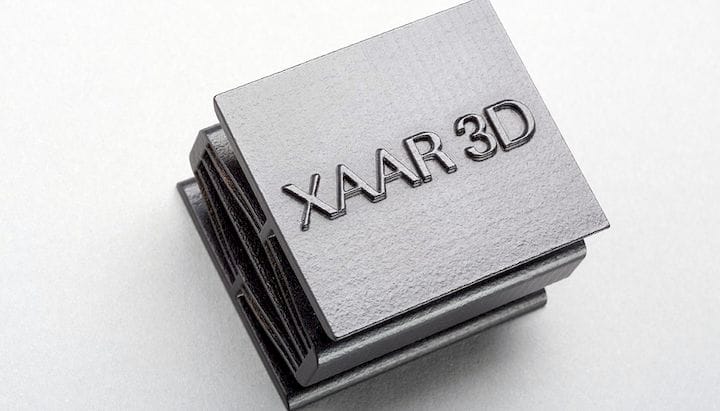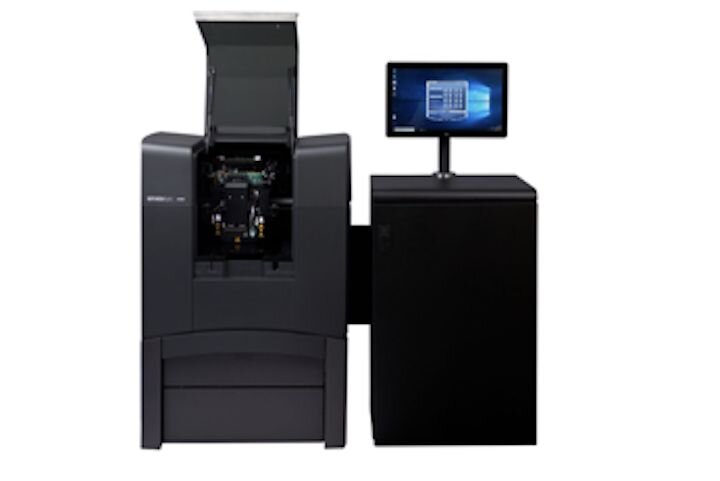![Xaar gets a huge boost from Stratasys [Source: Xaar]](https://fabbaloo.com/wp-content/uploads/2020/05/image-asset_img_5eb0909d2bb29.jpg)
Stratasys announced they’ve made a strategic investment in Xaar.
Hold on, who is Xaar again? They are an independent company that produces piezoelectric inkjet. Their drop-on-demand technology is used by industry in a variety of ways, and the company says:
“At Xaar we develop world-leading piezoelectric drop-on-demand inkjet technologies. We are also a world-class manufacturer of industrial digital inkjet printheads. Our printheads are trusted in industrial markets around the globe as the most effective way to lay down precise volumes of inks and fluids with absolute pin-point accuracy time after time.”
Stratasys was one of the parties that helped form Xaar 3D a couple of years ago. The idea was to transform university research into a commercialized product that provides high speed sintering capabilities.
Stratasys explains:
“The strategic investment by Stratasys is intended to enable Xaar 3D to accelerate the development of its additive manufacturing solutions based on High Speed Sintering (HSS) technology. These solutions are designed for end-use parts applications in low-to-medium production volumes, primarily in the industrial segment.”
There are plenty of thermoplastic sintering solutions on the market today, and in fact any SLS-powered 3D printer would be in that category. However, the key here is “high speed”. Existing powder sintering solutions tend to be rather slow and not particularly well-suited for mass production.
Stratasys Manufacturing Strategy
There’s that word again, “production”. It keeps coming up whenever I write about Stratasys. There is a reason for this: Stratasys’ strategy seems to be to get deeply involved in manufacturing processes.
It’s a very good strategy, as their original market for desktop and standalone extrusion 3D printers seems to be gradually being eaten up by others as a result of their patents being expired.
The company merged with Objet some years ago to counter that effect, as Objet still had many of their patents still in force. However, even those will eventually expire, and it would seem reasonable that Stratasys would seek another patent-protected domain to work within. The Xaar HSS technology could be that domain.
Few other 3D printer manufacturers are able to work directly with large-scale manufacturers as Stratasys is, as it has been exploring this area for years.
Stratasys Xaar Investment
The new investment in Xaar is substantial. They explain:
“… an agreement with Xaar plc to purchase shares of Xaar 3D Ltd. that will increase Stratasys’s stake in Xaar 3D from 15 to 45 percent, with Xaar plc, through its fully owned subsidiary, Xaar 3D Holdings, having the remaining 55 percent. In addition, the agreement includes an option for Stratasys to acquire the remaining shares of Xaar 3D. The transaction is subject to Xaar plc shareholder approval.”
So it seems that Stratasys is very confident in recent developments at Xaar 3D and wishes to push it along as fast as they can. Also note that they likely intend to absorb the company entirely by purchasing the remaining 55% at some point in the future.
Mass Customization with Xaar?
My suspicion is that this will eventually lead to a new line of manufacturing products from Stratasys using the Xaar HSS technology. These will be huge machines capable of mass manufacturing of custom thermoplastic objects. That’s something we really haven’t seen yet, as 3D printing of today can produce custom objects only at low volumes.
If this move is successful, it could boost Stratasys’ revenues significantly, as the manufacturing business is vastly larger than their current market, which is largely prototyping and low-volume manufacturing.












1 comment
Comments are closed.